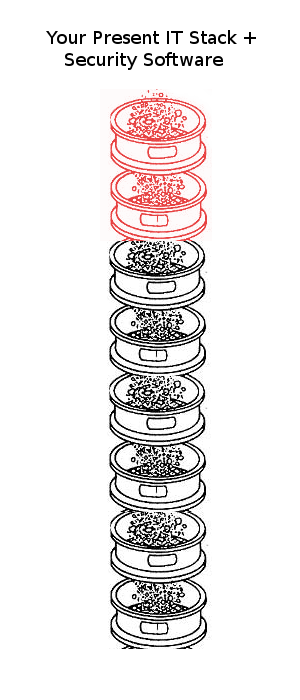From the post:
Scientific advances typically produce massive amounts of data, which is, of course, a good thing. But when many of these datasets are at multiple locations, instead of all in one place, it becomes difficult and costly for researchers to extract meaningful information from them.
So, the question becomes: “How do we learn from these datasets if they cannot be shared or placed in a central location?” says Trilce Estrada-Piedra.
Estrada-Piedra, an assistant professor of computer sciences at the University of New Mexico (UNM) is working to find the solution. She designs software that will enable researchers to collaborate with one another, using decentralized data, without jeopardizing privacy or raising infrastructure concerns.
“Our contributions will help speed research in a variety of sciences like health informatics, astronomy, high energy physics, climate simulations and drug design,” Estrada-Piedra says. “It will be relevant for problems where data is spread out in many different locations.”
The aim of the National Science Foundation (NSF)-funded scientist’s project is to build mathematical models from each of the “local” data banks — those at each distributed site. These models will capture data patterns, rather than specific data points.
“Researchers then can share only the models, instead of sharing the actual data,” she says, citing a medical database as an example. “The original data, for example, would have the patient’s name, age, gender and particular metrics like blood pressure, heart rate, etcetera, and that one patient would be a data point. But the models will project his or her information and extract knowledge from the data. It would just be math. The idea is to build these local models that don’t have personal information, and then share the models without compromising privacy.”
Estrada-Piedra is designing algorithms for data projections and middleware: software that acts as a bridge between an operating system or database and applications, especially on a network. This will allow distributed data to be analyzed effectively.
….
I’m looking forward to hearing more about Estrada-Piedra’s work, although we all know there are more than data projection and middleware issues involved. Those are very real and very large problems, but as with all human endeavors, the last mile is defined by local semantics.
Efficiently managing local semantics, that is enabling others to seamlessly navigate your local semantics and to in turn navigate the local semantics of others, isn’t a technical task, or at least not primarily.
The primary obstacle to such a task is captured by John D. Cook in Medieval software project management.
The post isn’t long so I will quite it here:
Centuries ago, English communities would walk the little boys around the perimeter of their parish as a way of preserving land records. This was called “beating the bounds.” The idea was that by teaching the boundaries to someone young, the knowledge would be preserved for the lifespan of that person. Of course modern geological survey techniques make beating the bounds unnecessary.
Software development hasn’t reached the sophistication of geographic survey. Many software shops use a knowledge management system remarkably similar to beating the bounds. They hire a new developer to work on a new project. That developer will remain tied to that project for the rest of his or her career, like a serf tied to the land. The knowledge essential to maintaining that project resides only in the brain of its developer. There are no useful written records or reliable maps, just like medieval property boundaries.
Does that sound familiar? That only you or another person “know” the semantics of your datastores? Are you still “beating the bounds” to document your data semantics?
Or as John puts it:
There are no useful written records or reliable maps, just like medieval property boundaries.
It doesn’t have to be that way. You could have reliable maps, reliable maps that are updated when your data is mapped for yet another project. Another ETL is the acronym.
You can, as a manager, of course, simply allow data knowledge to evaporate from your projects but that seems like a very poor business practice.
Johanna Rothman responded to John’s post in Breaking Free of Legacy Projects with the suggestion that every project should have several young boys and girls “beating the bounds” for every major project.
The equivalent of avoiding a single point of failure in medieval software project management.
Better than relying on a single programmer but using more modern information management/retention techniques would be a better option.
I guess the question is do you like using medieval project management techniques for your data or not?
If you do, you won’t be any worse off than any of your competitors with a similar policy.
On the other hand, should one of your competitors break ranks, start using topic maps for example for mission critical data, well, you have been warned.


